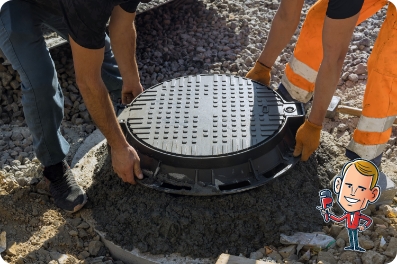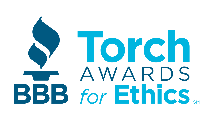Sewer lines affect the comfort of your home in more ways than one. They ensure proper wastewater disposal, preventing foul odors and potential health hazards. Well-maintained sewer systems also minimize the risk of backups and environmental contamination. This contributes to a clean, hygienic living environment, supporting overall well-being and comfort. Following certain preventive measures is critical to keeping sewage lines functioning properly.
1. Properly Dispose Grease
Grease can damage a sewage system if not disposed of properly. Always wait for cooking oil or grease to cool and harden before disposing of it in the garbage; never pour it down the drain. Think about setting aside a specific container for grease and taking it to a nearby recycling center for disposal. Keeping grease traps clean, cleaning with absorbent materials, and reducing the use of disposable wipes are all ways to keep grease from clogging sewage lines.
2. Use Drain Screens
By obstructing the passage of large food particles, drain screens lessen the likelihood of blockages and backups in the plumbing system. This means fewer clogs and repairs. You have several types of drain screens to choose from, including mesh screens, basket strainers, and splash guards. Mesh screens capture small food particles and prevent them from entering the sewer system. Basket strainers best capture larger food particles and prevent them from entering the sewer line. Splash guards prevent water and debris from splashing out of drains and garbage disposal units.
3. Avoid Flushing Non-Biodegradable Items
Backups, flooding, and water damage are major consequences of flushing non-biodegradable items. This is because things that don’t naturally decompose, such as paper towels, sanitary napkins, and wipes, clog pipes. Other things that might cause this include diapers, cotton swabs, and dental floss. The best way to dispose of non-biodegradable items is to place them in the trash.
4. Tree Root Management
Tree roots can make their way into pipes, creating problems like clogs and damage. One way to avoid this is to grow trees at a safe distance from sewage lines. It also helps to inspect and prune the roots regularly. You may even want to think about creating root barriers to stop them from growing into the pipes. Another option for preventing root expansion is to use chemical treatments like copper sulfate, hydrogen peroxide, or foaming root killers.
5. Dispose of Chemicals Properly
Sewer systems are vulnerable to the inappropriate disposal of common home chemicals such as paints, insecticides, drain cleaners, and more. Paint, for example, contains various chemicals, including solvents and pigments, that can harm the sewer line. Drain cleaners contain powerful and corrosive chemicals, such as strong acids or bases, designed to dissolve clogs in pipes. However, these substances harm sewer lines by causing corrosion and deterioration of the pipes. To dispose of these substances, bring them to a hazardous waste facility or other approved collection location.
6. Install a Sewer Line Cleanout
A sewer line cleanout is a capped pipe, typically installed at strategic points in the plumbing system. This type of system provides easy access for cleaning. The enhanced access to the sewer line also makes it easier for plumbers to quickly identify and fix blockages.
7. Regular Hot Water Flushing
Homeowners should aim to flush drains with hot water at least once a week. To effectively flush the drains, let the hot water run for at least five to 10 minutes. This duration allows the hot water to reach deep into the pipes, helping to dissolve accumulated grease and other debris. This is particularly beneficial in kitchen drains where grease accumulation is common.
8. Use Enzyme Cleaners
To avoid blockages and ensure proper drainage, enzyme cleansers include helpful microorganisms that decompose organic materials. A variety of options are available, such as septic system treatments, bio-enzymatic drain cleaners, and specialized enzyme-based solutions for sewage lines. The frequency of using enzyme cleaners depends on your specific needs and the product instructions. As a general guideline, using enzyme cleaners once a month can help maintain a healthy sewer system. Typically, you’ll pour the recommended amount directly into drains, allowing the enzymes to work on breaking down organic matter. To get the most out of enzyme cleansers, use them before you go to sleep so that they can work all night long.
9. Install a Backflow Prevention Device
A backflow prevention device protects sewage systems by blocking the backflow of polluted water into the home’s potable water supply. It usually has a check valve on it, which restricts water flow to only one direction and prevents undesired backflow. There are numerous types of backflow prevention devices to choose from. Some of the most common are double-check valve assemblies, reduced pressure zone devices, and pressure vacuum breakers. A plumber can help you choose the right type for your home.
10. Fix Water Leaks Quickly
Faulty pipe joints, high water pressure, tree root intrusion and pipe corrosion can all lead to water leaks. Water damage, soil erosion and damaged pipes are the results of leaks that go unfixed for too long. Immediate expert action stops pipe degradation, reducing the likelihood of sewage leaks and pollution.
11. Regularly Pump Septic Tanks
Septic tank pumping removes built-up sediments and sludge, avoiding clogs and system breakdowns. Failure to do this maintenance can result in backups, leaks, and environmental pollution. The size of the tank, the size of the home, the water use and the composition of the waste are factors that affect how often to pump the tank. The average interval for septic tank pumping is every three to five years.
12. Install a Pressure-Reducing Valve
If you hear water hammer sounds, experience frequent plumbing leaks, or notice excessive water pressure, it’s time to install a pressure-reducing valve. Installing this type of valve requires plumbers to gauge the water pressure, find the optimal setting, and then attach the valve to the main water line. By controlling the flow of water, these valves keep the sewage system safe from damage. As a result, the sewage system will last longer and experience fewer leaks.
13. Install a Sewer Alarm
Sewer system alarms play an essential role in safeguarding sewer lines. When the water level rises above the usual range, an alert will sound. This allows homeowners to address potential issues promptly, preventing sewer line damage and backups. Pressure sensor alarms detect irregular pressure, which is vital for detecting clogs and backups as well.
14. Schedule Regular Inspections
The best way to keep sewage lines in good repair is to have a plumber examine them often for signs of wear and tear. Before issues like leaks, clogs, or root infiltration get worse, plumbers can detect them and fix them. Prompt action avoids expensive repairs, protects against clogged drains, and keeps the system running smoothly.
Cal’s Plumbing is here to meet all of your plumbing needs. We offer backflow prevention, gas line repairs, pipe lining, water heater installations, water treatments, and much more. To schedule sewer line inspections in Tucson, contact us now.






